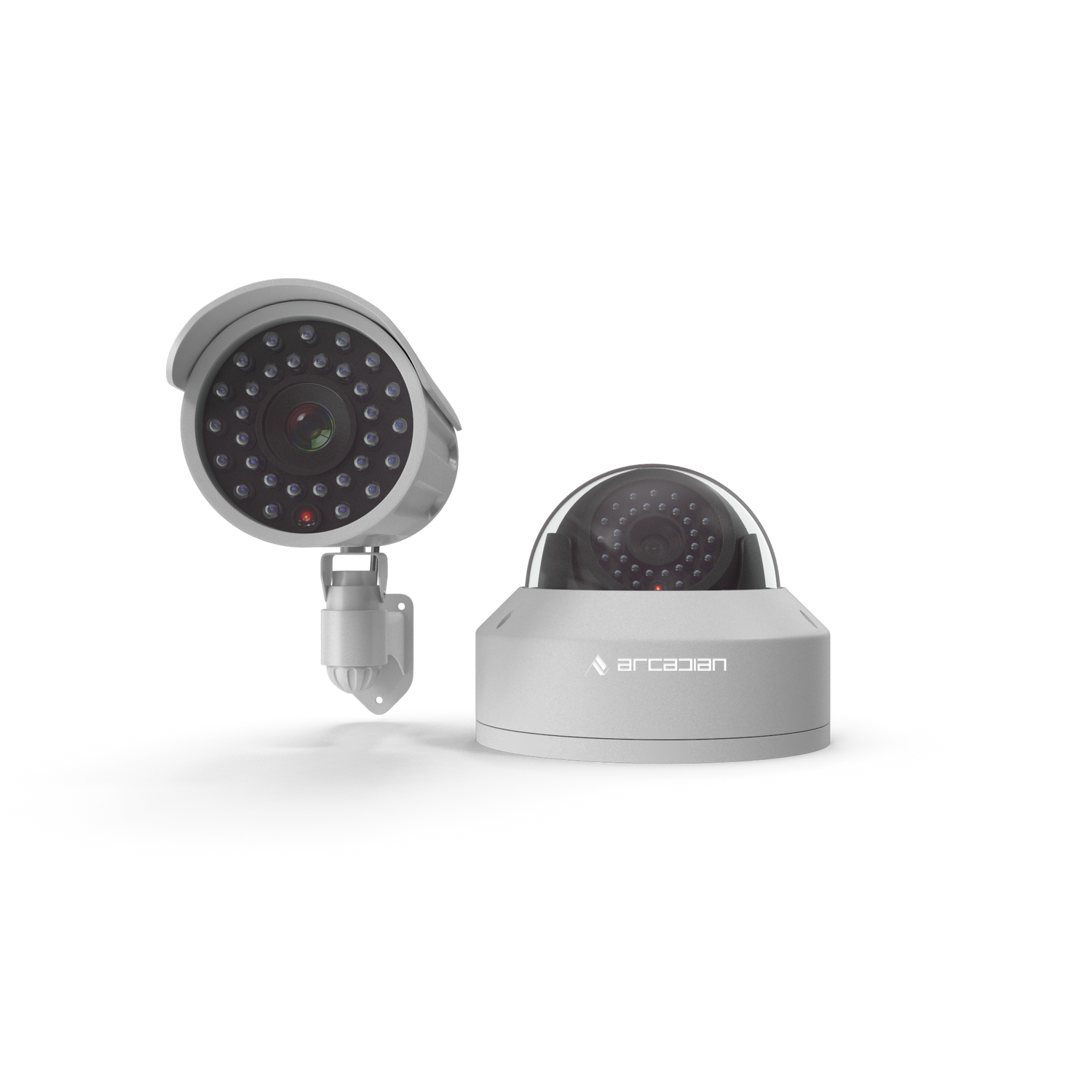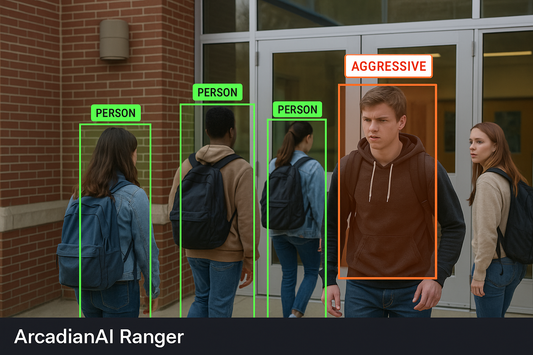What Are the Challenges of Implementing Security in High-Traffic Areas?
Introduction: Balancing Security and Flow in High-Traffic Areas High-traffic areas—such as shopping malls, transportation hubs, stadiums, and public events—pose unique challenges for security management. The high density of people, constant movement, and diverse activities make it difficult to monitor, predict, and respond to threats without disrupting the flow of operations....

Introduction: Balancing Security and Flow in High-Traffic Areas
High-traffic areas—such as shopping malls, transportation hubs, stadiums, and public events—pose unique challenges for security management. The high density of people, constant movement, and diverse activities make it difficult to monitor, predict, and respond to threats without disrupting the flow of operations.
In this blog, we’ll explore the most pressing challenges of implementing security in high-traffic areas and discuss how advanced technologies, such as AI-driven solutions and cloud-based surveillance, can address these complexities.
1. Managing Large Crowds Safely
The Challenge:
Crowd density increases the risk of accidents, stampedes, and security breaches. Traditional systems often lack the real-time monitoring capabilities needed to manage large crowds effectively.
How to Address It:
- AI-Powered Analytics: Detect overcrowding and potential bottlenecks in real time to prevent stampedes.
- Heat Mapping: Monitor crowd flow and identify high-density zones to adjust security deployment dynamically.
- Automated Alerts: Receive notifications of abnormal activity, such as sudden crowd surges or erratic movements.
Example:
A stadium used AI-powered video analytics to identify overcrowded exits, reducing congestion and improving safety during evacuation drills.
2. Detecting Threats in Busy Environments
The Challenge:
High-traffic areas often create visual and operational noise, making it difficult to identify potential threats like unattended bags, suspicious behavior, or unauthorized access.
How to Address It:
- Object Detection: Use AI to flag unattended items or prohibited objects.
- Behavioral Analytics: Identify suspicious movements, such as loitering or restricted area breaches.
- Facial Recognition: Enhance access control by verifying identities against watchlists.
Stat: Businesses using AI-driven behavioral analytics report a 35% improvement in identifying security threats (Source: Forrester).
3. Ensuring Rapid Response Times
The Challenge:
High-traffic areas require swift action to address incidents, as delays can escalate risks and lead to public panic.
How to Address It:
- Centralized Monitoring: Consolidate camera feeds and incident reports into a single dashboard for faster decision-making.
- Integrated Communication Systems: Connect security teams with first responders for immediate collaboration.
- Predefined Protocols: Automate emergency responses, such as lockdowns or public announcements.
Example:
A busy train station reduced response times by 40% after integrating remote monitoring with real-time communication systems.
4. Maintaining Privacy and Compliance
The Challenge:
Implementing surveillance in high-traffic areas raises concerns about data privacy and regulatory compliance, especially in sensitive locations like airports and public events.
How to Address It:
- Data Encryption: Protect recorded footage with end-to-end encryption to prevent unauthorized access.
- Compliance Monitoring: Ensure systems meet local privacy regulations such as GDPR or HIPAA.
- Anonymized Analytics: Use tools that anonymize individuals in video feeds while retaining actionable insights.
Stat: Businesses using compliance-ready surveillance systems reduce regulatory penalties by 25% (Source: Deloitte).
5. Scaling Security for Peak Times
The Challenge:
High-traffic areas often experience surges during events or peak hours, requiring dynamic scalability in security measures.
How to Address It:
- Cloud-Based Surveillance: Scale monitoring capabilities instantly without additional hardware investments.
- Temporary Deployments: Use mobile security solutions, such as drones or portable cameras, during peak times.
- Resource Allocation: AI tools can predict high-risk periods, optimizing staff deployment.
Example:
A shopping mall used predictive analytics to increase security staff during holiday shopping, reducing theft incidents by 20%.
6. Managing Access Control for Diverse Groups
The Challenge:
High-traffic areas often have multiple entry points catering to employees, visitors, and vendors, complicating access control.
How to Address It:
- Role-Based Access: Assign permissions based on roles, ensuring only authorized personnel can access restricted areas.
- Mobile Access Solutions: Issue digital credentials for temporary staff or vendors.
- Audit Trails: Maintain logs of all access activity for accountability and incident investigation.
Example:
An airport streamlined access control by integrating biometric authentication for staff, reducing unauthorized access attempts by 30%.
7. Handling Infrastructure Limitations
The Challenge:
Older buildings or outdoor areas may lack the infrastructure needed for modern security systems.
How to Address It:
- Wireless Surveillance Cameras: Deploy cameras that connect via Wi-Fi to avoid extensive cabling.
- Battery-Powered Devices: Use portable, battery-operated security devices for outdoor or temporary setups.
- Cloud Integration: Minimize on-site hardware by storing and processing data in the cloud.
Stat: Wireless and cloud-integrated systems reduce installation costs by 25% compared to traditional setups (Source: McKinsey).
Comparison Table: Traditional vs. Advanced Security for High-Traffic Areas
| Feature | Traditional Security | Advanced Security Solutions |
|---|---|---|
| Crowd Management | Manual monitoring | AI-driven heat mapping |
| Threat Detection | Reactive | Proactive, AI-powered |
| Response Times | Delayed | Instant, automated |
| Scalability | Limited by hardware | Cloud-based, highly scalable |
| Privacy | Minimal safeguards | Compliance-ready, encrypted systems |
8. Key Benefits of Advanced Security in High-Traffic Areas
- Proactive Threat Mitigation: AI-powered tools identify and address risks before they escalate.
- Improved Safety: Heat mapping and behavioral analytics enhance crowd management and prevent accidents.
- Scalability: Cloud-based solutions adapt to changing needs, from daily operations to peak times.
- Cost Efficiency: Reduce staffing and hardware expenses while increasing security effectiveness.
- Regulatory Compliance: Ensure systems meet privacy laws and standards, avoiding legal complications.
Conclusion: Meeting Security Challenges with Innovation
High-traffic areas demand security solutions that balance efficiency, safety, and privacy. By leveraging advanced technologies like AI, cloud-based surveillance, and mobile access control, businesses can overcome these challenges and provide secure, seamless experiences for visitors and staff.
Ready to enhance your security in high-traffic areas?
👉 Contact Arcadian.ai today to explore our scalable, AI-driven solutions designed for complex environments.
Visit Us on Social Media
💼 LinkedIn
🌐 Facebook
📸 Instagram
🎥 YouTube
🎬 TikTok
🐦 X
SEO-Optimized Keywords
High-Usage Keywords:
- Security for high-traffic areas
- AI-powered surveillance for public spaces
- Heat mapping for crowd management
- Real-time threat detection systems
- Cloud-based security solutions
Moderate-Usage Keywords:
- Scalable security for busy locations
- Behavioral analytics for public safety
- Wireless surveillance for high-traffic areas
- Crowd safety technologies
- Role-based access control systems
Low-Usage Keywords:
- Portable security devices for events
- Drone surveillance for crowd management
- Predictive analytics for peak times
- Smart surveillance for public spaces
- Compliance-ready security systems
SEO Tags for Enhanced Visibility:
- Security challenges in high-traffic areas
- Advanced surveillance for public safety
- AI-driven solutions for crowd management
- Cloud-based security for busy locations
- Scalable security technologies for public spaces

Security is like insurance—until you need it, you don’t think about it.
But when something goes wrong? Break-ins, theft, liability claims—suddenly, it’s all you think about.
ArcadianAI upgrades your security to the AI era—no new hardware, no sky-high costs, just smart protection that works.
→ Stop security incidents before they happen
→ Cut security costs without cutting corners
→ Run your business without the worry
Because the best security isn’t reactive—it’s proactive.







![[IMAGE: Crowded European plaza with pickpocket gangs blending into tourists – realistic, 16:9 – alt="Organized pickpocket gang operating in a busy tourist square"]](http://www.arcadian.ai/cdn/shop/articles/Crowded_European_plaza_with_pickpocket_gangs_blending_into_tourists_realistic_16_9_alt_Organized_pickpocket_gang_operating_in_a_busy_tourist_square.png?v=1756224312&width=533)